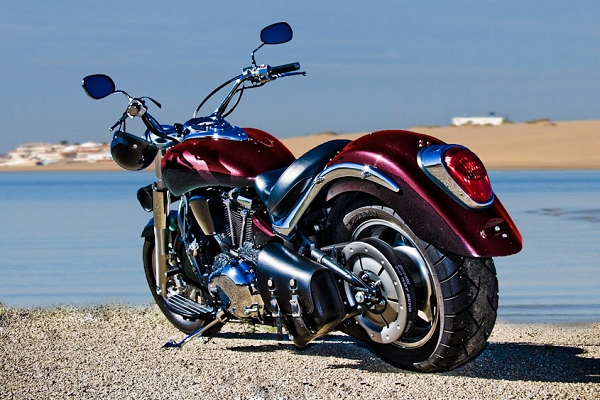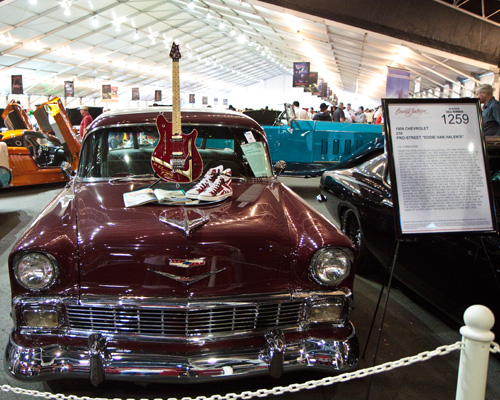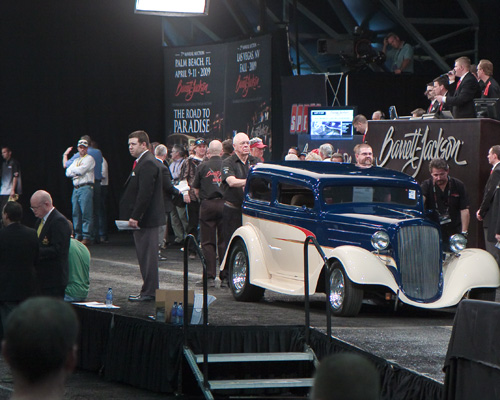Motorcycles and Automobiles in the Studio
Category : Automotive Motorcycle photography Studio
Automotive or motorcycle photography in the studio presents some interesting challenges. This week I will take a look at some of the options for dealing with these details.

First of all they are big and don’t move easily to “adjust their pose”. Motorcycles are a bit easier to photograph as they can move easier, but cars or trucks are just a lot of work. Careful planning is required.
The first thing you need is a studio with enough space to hold the car and allow the photographer to get far enough away to shoot it. If you are too close you will need to use your wide angle lens leading to shots where the vehicle will have a huge front end for example. Sometimes this look can be desired, but more often than not, it is problematic. I prefer to be a good 20 or more feet to keep proportions correct.
For moving the car around, car wheel dollies are great. One goes under each tire and you can jack it up then basically push the car in any direction you want, even spin it in a circle. They are not a cheap tool, but if you shoot a lot of cars, they are well worth the investment.
The other most difficult thing to deal with is reflections. The whole automobile is one great big mirror. Chrome on motorcycles can be even worse. And of course the classic black hot rod looks great, but shows everything. A very clean studio area is critical. Anything that must remain should be pushed as far away as possible from the car. This includes yourself and your assistants.
I actually have my assistants step off set behind a wall in my studio. I wear black to help hide my reflection. Another reason for keeping the photographer to automobile distance large during the shoot, is that it makes the reflections much smaller and easier to deal with in post.
Lighting is another key. You need a large soft light from above for most automotive work. Since I shoot on white, I have painted my light stands and cords white to hide them in reflections. Nothing more annoying than a beautiful white highlight on a car with a light stand jumping out at you.
Feel free to contact me with any questions. And if you are in the Phoenix area, I do rent my studio to other photographers.




